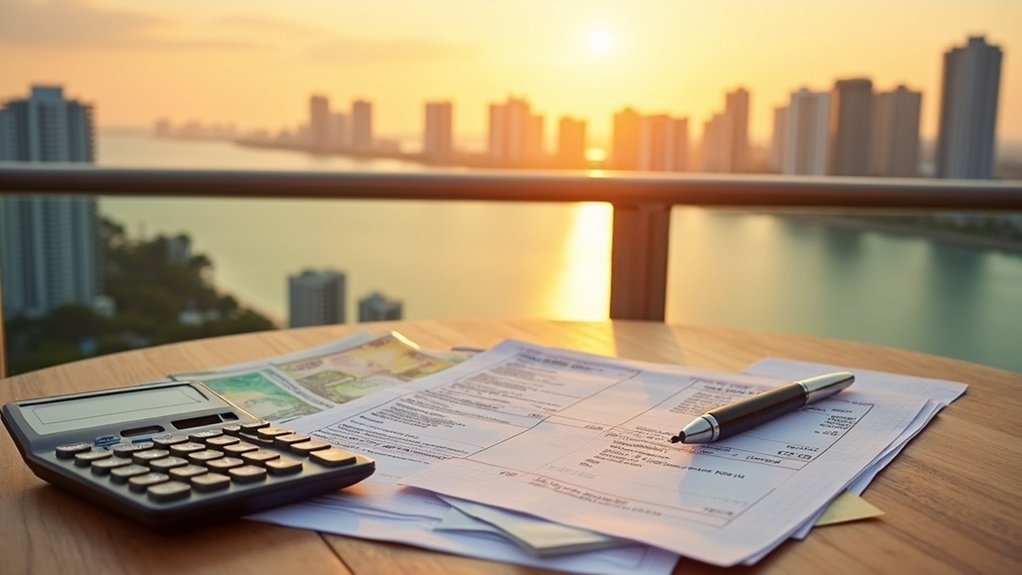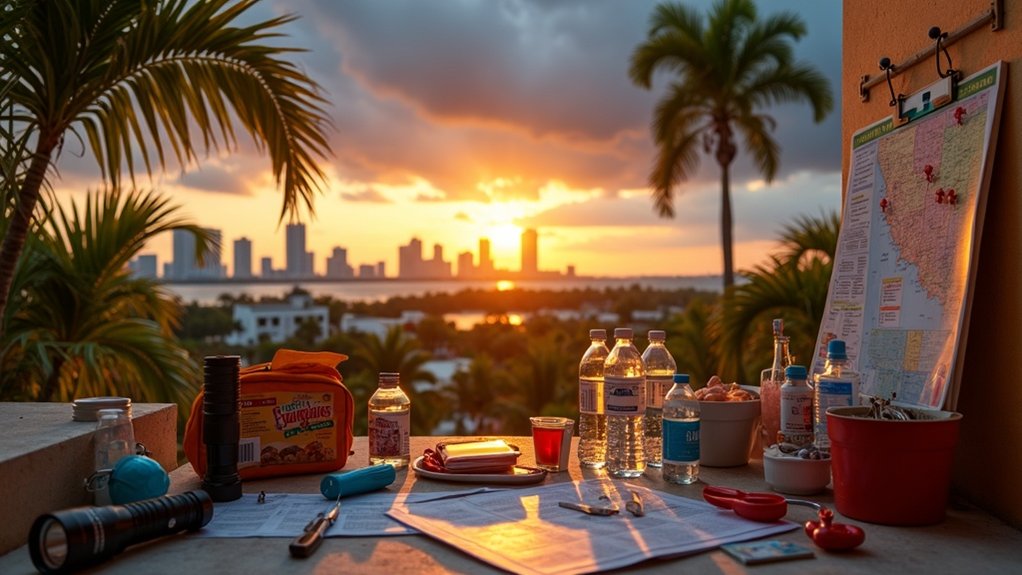Thinking about making the move to Miami? You’re not alone! Many people are drawn to the vibrant culture, beautiful beaches, and warm weather. But before you dive in, you might be wondering where to start. From choosing the right neighborhood that suits your lifestyle to understanding the costs associated with living in this sunny city, there’s a lot to consider. For example, did you know that housing prices can vary significantly depending on where you choose to live? And there are also essential factors like utilities, transportation, and even hurricane preparedness to keep in mind. It’s important to be informed so you can make the best decisions for your new adventure. Curious about what else you need to know? Keep reading to uncover the details!
Understanding Miami’s Neighborhoods
When selecting the right neighborhood in Miami, it’s essential to consider your lifestyle preferences. Miami is known for its diverse neighborhoods, each offering unique characteristics that cater to different needs.
For families, North Beach is often regarded as a great choice due to its community-oriented atmosphere and access to parks. If luxury living is what you’re after, Coral Gables stands out with its upscale homes and beautiful tree-lined streets.
For younger, creative professionals, trendy areas like Coconut Grove provide a vibrant scene with cafes, art galleries, and outdoor activities. Wynwood, an emerging neighborhood, is also a popular choice for those seeking a dynamic environment filled with street art and innovative spaces.
When it comes to housing costs, it’s important to be aware of the varying home prices across Miami. The median home price is approximately $581,222, but exclusive areas such as Fisher Island can exceed $1 million, reflecting their luxury status.
If you’re considering renting, the average cost for a one-bedroom apartment in the city center is around $1,700, while more budget-friendly options can be found in neighborhoods like Doral and Homestead.
Take your time to look into these neighborhoods to find the one that aligns best with your lifestyle and budget. Each area has its own charm and offerings, so thorough research will help you make an informed decision that suits your needs.
Preparing for the Cost of Living

When preparing for a move to Miami, it’s important to keep housing costs in mind, as the median home price is around $581,222.
You’ll also want to consider utility expenses, which typically average about $178 per month.
Don’t overlook transportation costs, as they can also impact your overall budget.
By taking these factors into account, you’ll be in a better position to manage the city’s higher cost of living and enjoy everything Miami has to offer.
Now, let’s look at other aspects of the move that might affect your financial planning.
Budgeting for Housing Costs
When considering a move to Miami, it’s crucial to understand the housing costs to effectively budget for your transition. The average rent for a one-bedroom apartment in the city center is approximately $1,700. If you’re looking for more affordable options, similar apartments can be found outside the city center for around $1,000.
If purchasing a home is on your radar, be prepared for a median home price of about $581,222. This figure indicates a competitive real estate market, so it’s wise to check out various neighborhoods and their respective price ranges. Additionally, property taxes can differ significantly between areas, so thorough research on this topic is essential.
In addition to housing costs, don’t forget to factor in utilities as part of your budgeting.
Keep in mind that grocery prices in Miami can be slightly above the national average, which may impact your overall cost of living. By planning your finances carefully and taking these various factors into account, you can make sure a smoother transition to this vibrant city.
Understanding Utility Expenses
Understanding utility expenses is crucial for anyone considering a move to Miami, particularly because of the city’s warm climate. On average, you can expect to pay around $178 per month for utilities in a typical 915-square-foot apartment. However, this figure can vary based on your personal usage and the utility provider you choose.
Given Miami’s hot and humid summers, it’s important to note that electricity costs can be significantly higher, largely due to air conditioning needs. In addition to electricity, water and sewage services generally add about $30 to $60 to your monthly expenses.
If you’re planning to set up internet services, expect to pay around $60 on average, though there are various plans available that may fit different budgets and needs.
Additionally, remember to factor in extra costs such as trash collection and recycling services, which may not be included in your standard utility package.
Guiding Transportation Fees
Understanding transportation fees in Miami is crucial for managing your overall cost of living, especially if you use public transit or plan to drive regularly.
Miami’s Metrorail and Metrobus services provide a cost-effective way to direct the city, with average fares around $2.25 per ride. If you find yourself commuting frequently, consider investing in a monthly pass, which is approximately $112 and can lead to significant savings.
For those who prefer driving, it’s important to be aware of parking fees, which can range from $3 to $5 per hour in downtown areas. Additionally, owning a vehicle in Miami entails higher insurance and maintenance costs, largely due to the city’s busy traffic conditions.
Another flexible transportation option is ride-sharing services like Uber and Lyft, which are widely used in Miami. Fares for short trips typically range from $10 to $30, making them a convenient choice when public transit schedules may not align with your plans.
Essential Utilities and Services

When moving to Miami, it’s important to set up essential utilities and services to make certain a smooth transition.
First, you should connect with Florida Power & Light for your electricity needs. They provide various payment options to accommodate different preferences.
For water and sewage services, reach out to the Miami-Dade Water and Sewer Department. They’ll guide you through the setup process and make certain you have access to clean water and proper waste management.
If you’re looking for internet and cable, consider reputable providers like Xfinity, AT&T, and Spectrum. These companies offer competitive packages that can meet your entertainment and connectivity needs.
Natural gas is another utility you’ll need to arrange, and the Peoples Gas System is the reliable choice in Miami. They’re known for their consistent service and customer support.
For waste management, you can set up trash and recycling collection through Miami-Dade County’s Solid Waste Management. This service make certains that your curbside pickup is handled efficiently.
Lastly, don’t overlook your phone services. Contact local providers such as Verizon or T-Mobile to establish your mobile and landline services. This is especially important for staying connected in case of emergencies.
Guiding Car Registration and Insurance

When you move to Miami, registering your car and getting insurance is a key step to confirm you can drive without any issues.
Start by gathering the necessary documents and familiarize yourself with Florida’s insurance requirements, which include minimum coverage for personal injury and property damage.
It’s also a good idea to brush up on local driving regulations, as this will help you feel more comfortable on the roads.
Speaking of driving, let’s take a look at some tips for directing Miami’s traffic.
Vehicle Registration Process
Guiding the vehicle registration process in Miami can feel overwhelming at first, but with a clear understanding of the requirements, you can simplify the experience. To register your vehicle, you will need to gather a few essential documents: proof of identity, proof of Florida residency, and either the vehicle’s title or a bill of sale. It’s important to note that if you have recently moved to Florida, you have a 30-day window to complete your vehicle registration to avoid any potential fines.
Here’s a concise overview of what you’ll need and some associated costs:
| Requirement | Details | Cost Estimate |
|---|---|---|
| Proof of Identity | A valid government-issued ID | N/A |
| Proof of Florida Residency | A recent utility bill or lease | N/A |
| Vehicle Title/Bill of Sale | Necessary for the registration process | N/A |
| VIN Verification (if applicable) | Can be done by law enforcement or a dealer | N/A |
| Registration Fee (standard) | Generally around $14.50 | $14.50 (may be higher for larger vehicles) |
Insurance Requirements Overview
Understanding the insurance requirements for your vehicle in Miami is crucial, as Florida has specific laws that all drivers must comply with. In Miami, you’re required to have a minimum of $10,000 in personal injury protection (PIP) and $10,000 in property damage liability (PDL) coverage.
When you register your vehicle, be ready to provide proof of insurance, a valid Florida driver’s license, and either the vehicle title or a bill of sale.
As a new resident, it’s important to note that you have 30 days to register your vehicle. Failing to do so may result in fines, so make this a priority.
Additionally, keep in mind that local factors such as urban density and crime rates can impact your insurance premiums. Therefore, it’s advisable to compare different insurance options to find coverage that best suits your driving history and the type of vehicle you own.
Local Driving Regulations
Directing local driving regulations in Miami is crucial for new residents to make sure their vehicle is registered and insured correctly.
If you’ve recently moved to the area, it’s important to register your vehicle within 30 days at your local county tax collector’s office. To do this, you’ll need to present several key documents:
- Proof of Identity and Residency: This can be a Florida driver’s license or another form of identification along with proof of your current address, such as a utility bill or lease agreement.
- Ownership Documents: You’ll need to provide the title of your vehicle, which proves that you own it.
- Proof of Florida Insurance: Florida law requires that you have insurance coverage, including a minimum of $10,000 in personal injury protection and property damage liability insurance.
When you go to register your vehicle, be aware that the fees will depend on the type and weight of your vehicle, as well as any additional costs for specialty tags you might desire.
It’s also wise to compare insurance rates, as they can differ significantly based on your driving history and where you live in Miami.
Tax Considerations for New Residents

If you’re considering relocating to Miami, understanding the local tax landscape is crucial for making informed financial decisions. Florida is known for its no state income tax policy, which means you can retain a larger portion of your income compared to states that do impose an income tax. This can be a significant advantage for many residents.
However, it’s important to note that property taxes in Miami can vary considerably depending on the neighborhood. This variation means that researching local property tax rates is essential, as they can impact your overall cost of living.
In addition to property taxes, Miami-Dade County has a sales tax rate of 7%, which consists of 6% from the state and an additional 1% local tax. This sales tax applies to most purchases, so it’s wise to factor this into your budget as you plan your expenses.
One benefit for homeowners is the homestead exemption offered by Florida. If you make Miami your primary residence, you may qualify for this exemption, which can help reduce your property tax burden.
To guide the complexities of property ownership, capital gains, and other financial matters effectively, consulting with a tax professional is highly advisable. They can provide tailored advice based on your situation and help you make the most of Florida’s tax advantages.
Summary of Key Tax Types in Miami:
| Tax Type | Rate/Details | Notes |
|---|---|---|
| State Income Tax | None | Retain more earnings |
| Property Tax | Varies by neighborhood | Essential to research local rates |
| Sales Tax | 7% (6% state, 1% local) | Affects everyday purchases |
Understanding these key points will empower you to make sound financial choices as you transition to life in Miami.
Hurricane Preparedness Planning

As you adjust to life in Miami, it’s important to prioritize hurricane preparedness, especially since the hurricane season spans from June through November.
Taking proactive steps now can help confirm your safety and minimize stress when a storm approaches. Here are some essential actions to consider:
– Build a Supply Kit: A well-stocked supply kit is crucial for any hurricane preparedness plan. Aim to include enough non-perishable food**, water, medications, and other necessities to last at least 72 hours.
Consider specific dietary needs and include items like a flashlight, batteries, a first aid kit, and personal hygiene products.
– Know Your Evacuation Routes: Familiarizing yourself with local evacuation routes is a vital part of hurricane preparedness.
Flooding and storm surges can occur quickly, so understanding the best routes to safety can save valuable time during an emergency. Check local resources for updated maps and information on shelters.
– Secure Your Home: Taking steps to Secure Your Home is an important aspect of hurricane preparedness.
Installing storm shutters and reinforcing doors can greatly reduce the risk of damage from high winds. Additionally, consider trimming trees and removing outdoor items that could become projectiles in strong winds.
Lastly, don’t forget to keep important documents, such as identification, insurance policies, and medical records, in a waterproof container.



